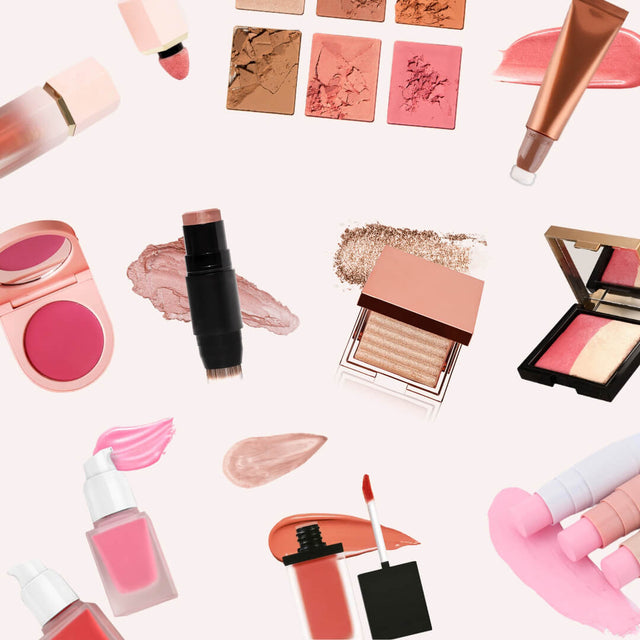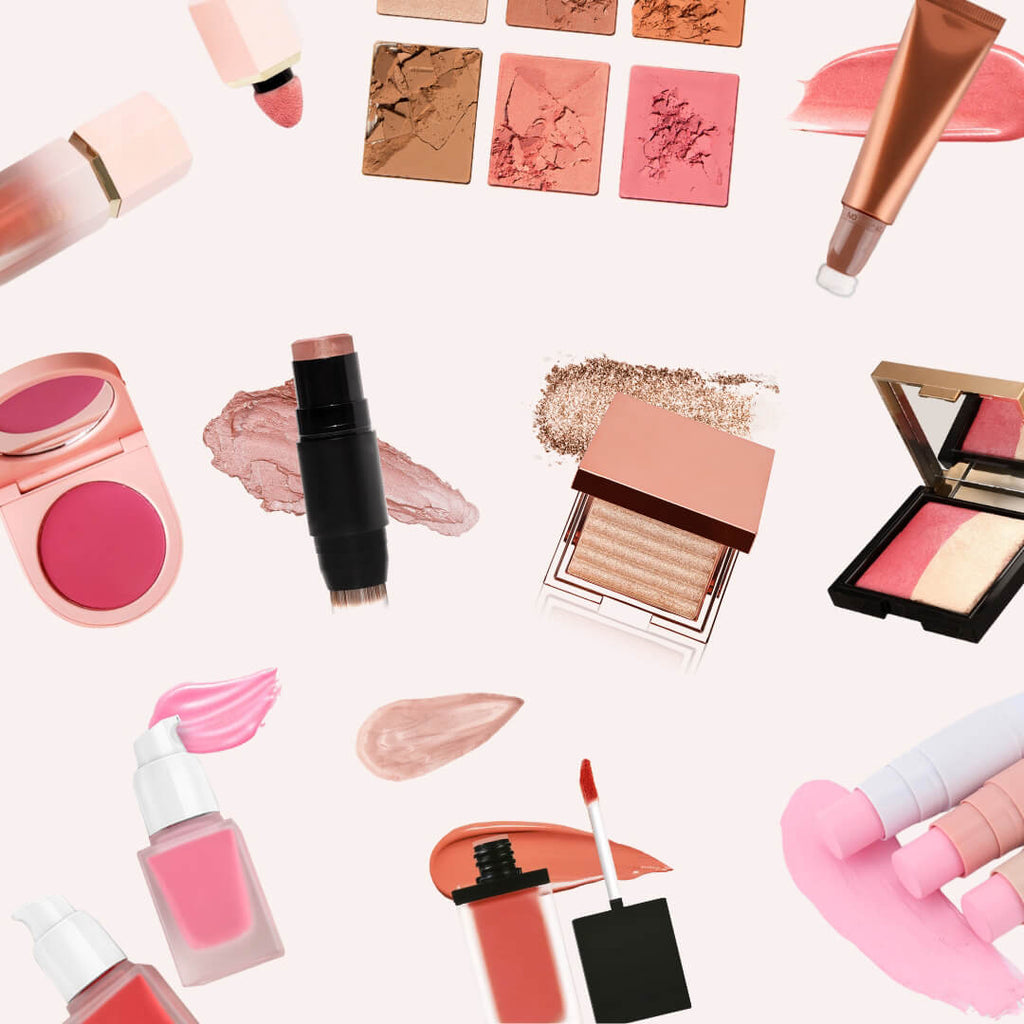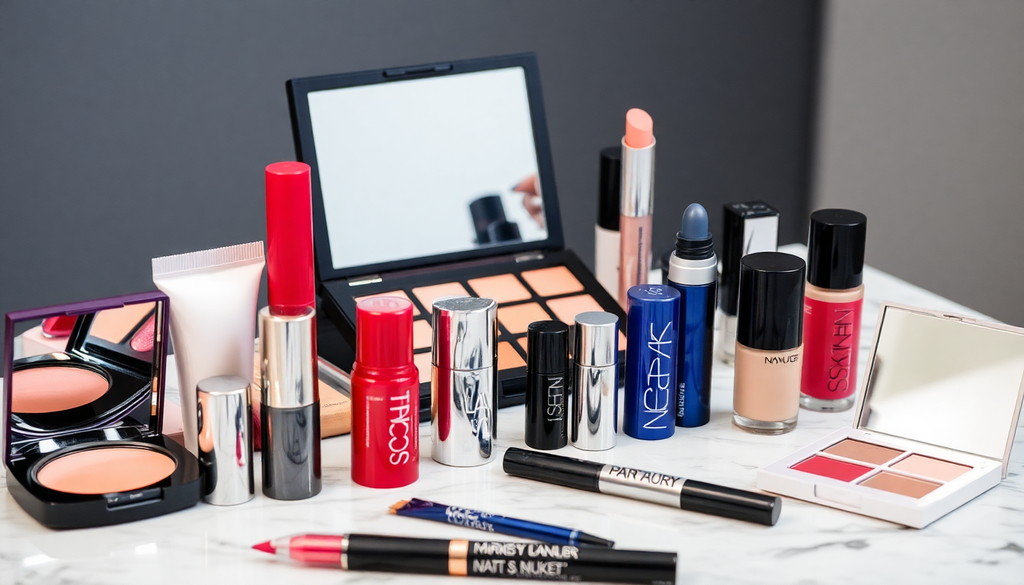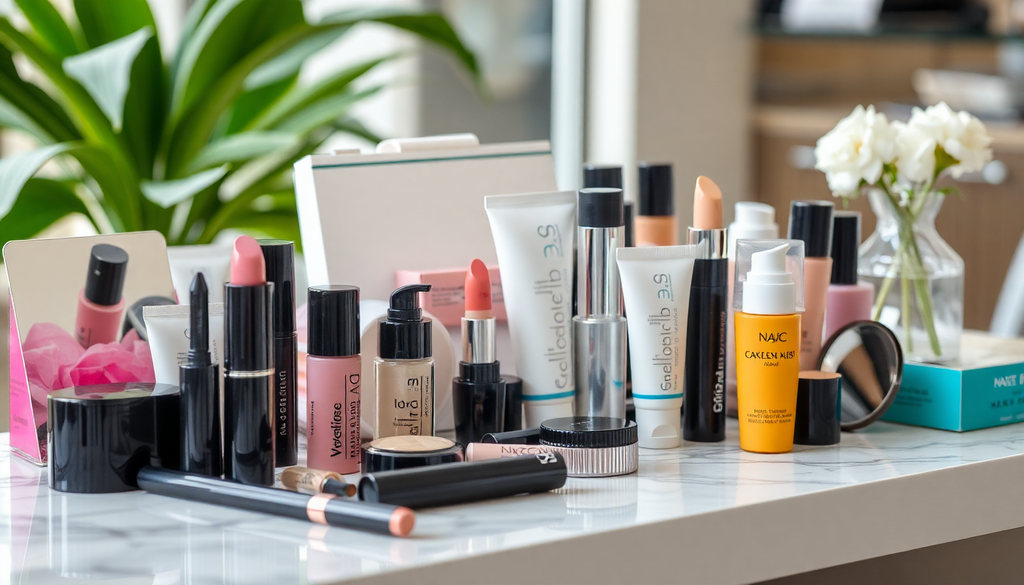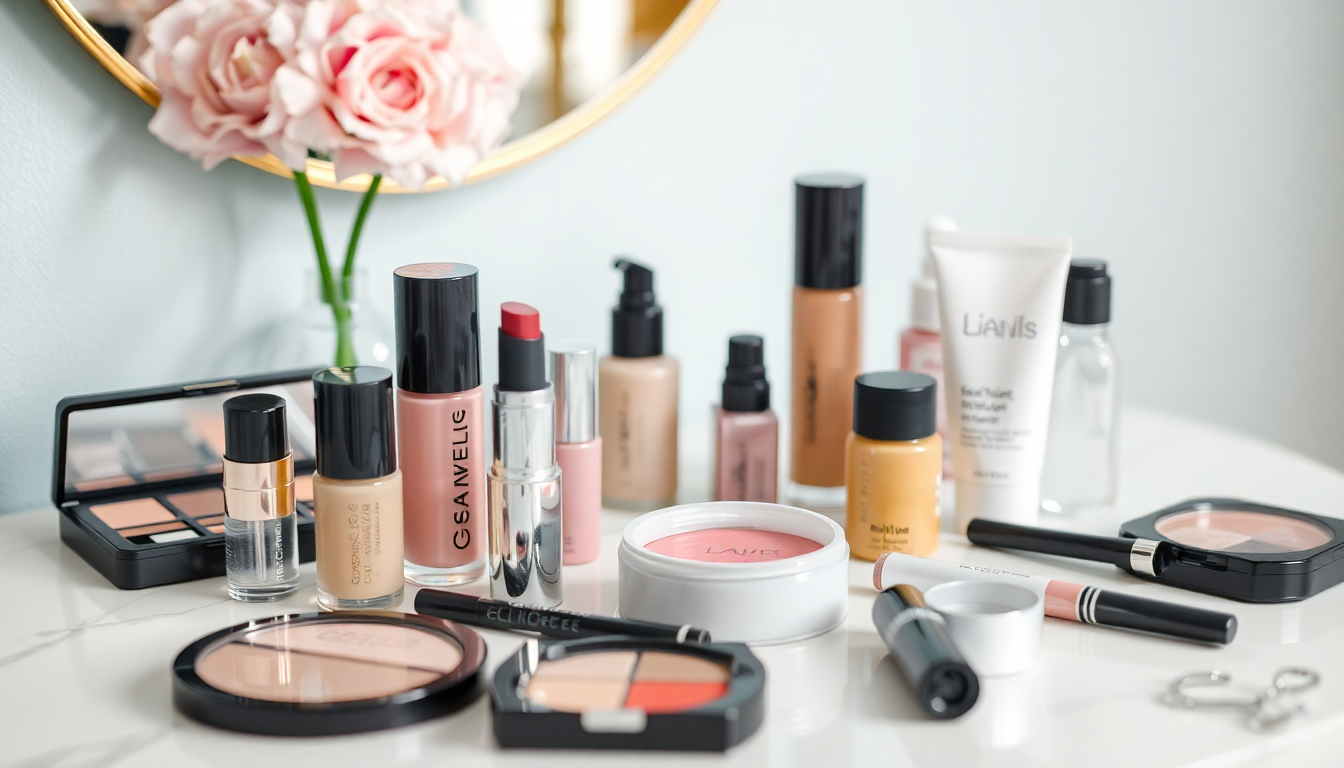
إطلاق علامتك التجارية الخاصة لمستحضرات التجميل: الخطوات الأساسية للنجاح في السوق العالمية
مقدمة
بدء علامتك التجارية الخاصة في مجال المكياج يمكن أن يكون مشروعًا مثيرًا. مع ازدهار صناعة الجمال على مستوى العالم، الآن هو الوقت المثالي للغوص في عالم مستحضرات التجميل. ستوجهك هذه المقالة خلال الخطوات الأساسية لإطلاق علامتك التجارية للمكياج بنجاح، من البحث الأولي إلى استراتيجيات التسويق.
الخطوة 1: ابحث في سوقك
فهم جمهورك المستهدف والسوق أمر بالغ الأهمية. قم بإجراء بحث سوقي شامل لتحديد:
- الخصائص الديموغرافية المثالية لعملائك: حدد العمر، الجنس، مستوى الدخل، وتفضيلات عملائك المحتملين.
- الاتجاهات الحالية في صناعة المكياج: تابع المنتجات والألوان والتقنيات الشائعة. يمكن لأدوات مثل Google Trends ومنصات التواصل الاجتماعي أن توفر رؤى.
- المنافسون وعروضهم: قم بتحليل المنافسين لتحديد ما يقومون به بشكل جيد وأين توجد الفجوات في السوق.
الخطوة 2: اختر تخصصك
للتفوق في سوق مزدحم، اختر تخصصًا يتناغم مع جمهورك المستهدف. فكر في التخصص في:
- منتجات نباتية أو خالية من القسوة: يبحث العديد من المستهلكين عن مستحضرات تجميل منتجة بأخلاقية.
- مكياج عضوي: الطلب على المكونات الطبيعية في تزايد، مما يجذب المستهلكين المهتمين بالصحة.
- مستحضرات التجميل الفاخرة أو الراقية: استهداف سوق مميز يمكن أن يحقق هوامش ربح أعلى.
- منتجات مستدامة وصديقة للبيئة: مع تزايد المخاوف البيئية، يمكن للتغليف والصيغ الصديقة للبيئة جذب قاعدة عملاء وفية.
الخطوة 3: العثور على مصنع موثوق
اختيارك للمُصنّع سيؤثر بشكل كبير على جودة منتجاتك. ابحث عن مُصنّع يقدم:
- خدمات العلامة الخاصة: تأكد من قدرتهم على إنتاج المنتجات تحت اسم علامتك التجارية.
- الامتثال للوائح المحلية والدولية: يجب أن يكون لديهم شهادات لمعايير الجودة والسلامة.
- الحد الأدنى لكميات الطلب التي تناسب ميزانيتك: ضع في اعتبارك قيودك المالية وقابلية التوسع عند اختيار الشركة المصنعة.
- خيارات التخصيص: ابحث عن مصنع يتيح لك تخصيص التركيبات، الظلال، والتغليف.
الخطوة 4: فهم المتطلبات التنظيمية
كل دولة لديها لوائح مختلفة بخصوص مستحضرات التجميل. تعرّف على:
- متطلبات الوسم: تأكد من أن تسمياتك توفر قوائم مكونات دقيقة، تعليمات الاستخدام، وأي تحذيرات.
- قيود المكونات: ابحث عن المكونات المحظورة أو المقيدة في المناطق التي تخطط للبيع فيها.
- لوائح اختبار السلامة والفعالية: قم بإجراء الاختبارات اللازمة لضمان أن منتجاتك آمنة للاستخدام من قبل المستهلكين.
- تقارير سلامة المنتجات التجميلية (CPSR): قد تتطلب بعض المناطق تقرير CPSR لمنتجاتك.
تأكد من أن منتجاتك تتوافق مع اللوائح في البلدان التي تخطط للبيع فيها، حيث إن عدم الامتثال قد يؤدي إلى عقوبات شديدة.
الخطوة 5: إنشاء هوية علامتك التجارية
يجب أن تتناغم هوية علامتك التجارية مع جمهورك المستهدف. ضع في اعتبارك العناصر التالية:
- اسم العلامة التجارية: اختر اسمًا يكون سهل التذكر ويعكس قيم علامتك التجارية.
- تصميم الشعار: استأجر مصممًا محترفًا لإنشاء شعار يمثل علامتك التجارية بصريًا.
- التغليف: استثمر في تغليف جذاب وعملي يعزز تجربة العميل.
- قصة العلامة التجارية: طور سردًا جذابًا يربط المستهلكين ويميز علامتك التجارية.
يجب أن تعمل كل هذه العناصر معًا لخلق صورة علامة تجارية متماسكة ومعروفة.
الخطوة 6: إعداد متجرك الإلكتروني
في عصرنا الرقمي اليوم، وجود حضور على الإنترنت أمر ضروري. لإعداد متجرك الإلكتروني:
- اختر منصة تجارة إلكترونية: منصات مثل Shopify وWooCommerce وBigCommerce سهلة الاستخدام وتوفر أدوات متنوعة لمساعدتك في إدارة متجرك.
- صمم موقعًا إلكترونيًا سهل الاستخدام: تأكد من أن موقعك سهل التنقل، وجذاب بصريًا، ومحسّن للتحويلات.
- ضمان خيارات دفع آمنة: قدم عدة طرق للدفع وتأكد من أن المعاملات آمنة.
- تحسين للأجهزة المحمولة: مع تزايد عدد المستهلكين الذين يتسوقون عبر الأجهزة المحمولة، تأكد من أن موقعك ملائم للأجهزة المحمولة.
- تنفيذ أفضل ممارسات تحسين محركات البحث (SEO): قم بتحسين أوصاف المنتجات، وعلامات الميتا، والصور لتحسين ترتيبك في محركات البحث.
الخطوة 7: تنفيذ سياسات الاستيراد
إذا كنت تخطط للبيع دوليًا، فافهم سياسات الاستيراد في كل دولة. ضع في اعتبارك:
- التعريفات والضرائب: ابحث عن التعريفات والضرائب المطبقة التي قد تؤثر على تسعيرك.
- وثائق الجمارك: تأكد من أن لديك الوثائق اللازمة لتخليص الجمارك.
- لوائح الشحن: التعاون مع شركات لوجستية موثوقة لضمان التسليم في الوقت المحدد.
- سياسة الإرجاع والاسترداد: وضع سياسة واضحة للتعامل مع الإرجاع والاسترداد للعملاء الدوليين.
الخطوة 8: تسويق علامتك التجارية للمكياج
للوصول إلى جمهورك المستهدف بفعالية، قم بتطوير استراتيجية تسويقية تشمل:
- التسويق عبر وسائل التواصل الاجتماعي: استخدم منصات مثل Instagram وTikTok وPinterest لعرض منتجاتك والتفاعل مع جمهورك.
- التعاون مع المؤثرين: التعاون مع مؤثري الجمال للوصول إلى جمهور أوسع وبناء المصداقية.
- حملات التسويق عبر البريد الإلكتروني: إنشاء حملات بريد إلكتروني مستهدفة لإبلاغ العملاء بالمنتجات الجديدة، العروض الخاصة، والتحديثات.
- التسويق بالمحتوى: استخدم المدونات، والدروس التعليمية، والفيديوهات لتقديم قيمة وترسيخ علامتك التجارية كسلطة في مجال الجمال.
- الإعلانات المدفوعة: استثمر في حملات الدفع مقابل النقرة على وسائل التواصل الاجتماعي وGoogle Ads لجذب الزوار إلى موقعك الإلكتروني.
العلامة التجارية والرسائل المتسقة عبر جميع المنصات ستساعد في خلق صورة علامة تجارية معروفة وموثوقة.
الخطوة 9: إطلاق منتجاتك
بعد الانتهاء من جميع التحضيرات، حان وقت الإطلاق! خطط لحدث إطلاق أو حملة لخلق ضجة حول منتجاتك. ضع في اعتبارك:
- مقدمات ما قبل الإطلاق: قم ببناء الترقب من خلال مشاركة لمحات ومقدمات على وسائل التواصل الاجتماعي.
- عروض خاصة: قدم خصومات أو منتجات مجمعة للمشترين الأوائل لتشجيع المبيعات.
- التفاعل مع جمهورك: استضف جلسات مباشرة، جلسات أسئلة وأجوبة، أو مسابقات لتتفاعل مباشرة مع جمهورك.
- البيانات الصحفية: أرسل البيانات الصحفية إلى مجلات الجمال والمنشورات الإلكترونية للحصول على تغطية إعلامية.
الخطوة 10: جمع الملاحظات والتكرار
بمجرد إطلاق منتجاتك، اجمع تعليقات العملاء لتحسين عروضك. ضع في اعتبارك:
- الاستطلاعات والمراجعات: شجع العملاء على ترك المراجعات وإكمال الاستطلاعات للحصول على رؤى حول تجاربهم.
- راقب وسائل التواصل الاجتماعي: انتبه إلى الإشارات والتعليقات على وسائل التواصل الاجتماعي حول منتجاتك.
- تحليل بيانات المبيعات: استخدم أدوات التحليل لتتبع أداء المبيعات وتحديد الاتجاهات.
سيساعدك هذا التعليق على اتخاذ قرارات مستنيرة لتحسين المنتج والإطلاقات المستقبلية.
خاتمة
إطلاق علامتك التجارية الخاصة لمستحضرات التجميل يتطلب تخطيطًا دقيقًا وتنفيذًا محكمًا. من خلال اتباع هذه الخطوات الأساسية، يمكنك تمهيد الطريق للنجاح في السوق العالمية. تذكر أن صناعة الجمال في تطور مستمر، لذا كن مرنًا، وتفاعل باستمرار مع جمهورك، وكن مستعدًا للابتكار. شغفك والتزامك بالجودة سيبرزان، مما يساعد علامتك التجارية على الازدهار في هذا المشهد التنافسي.

